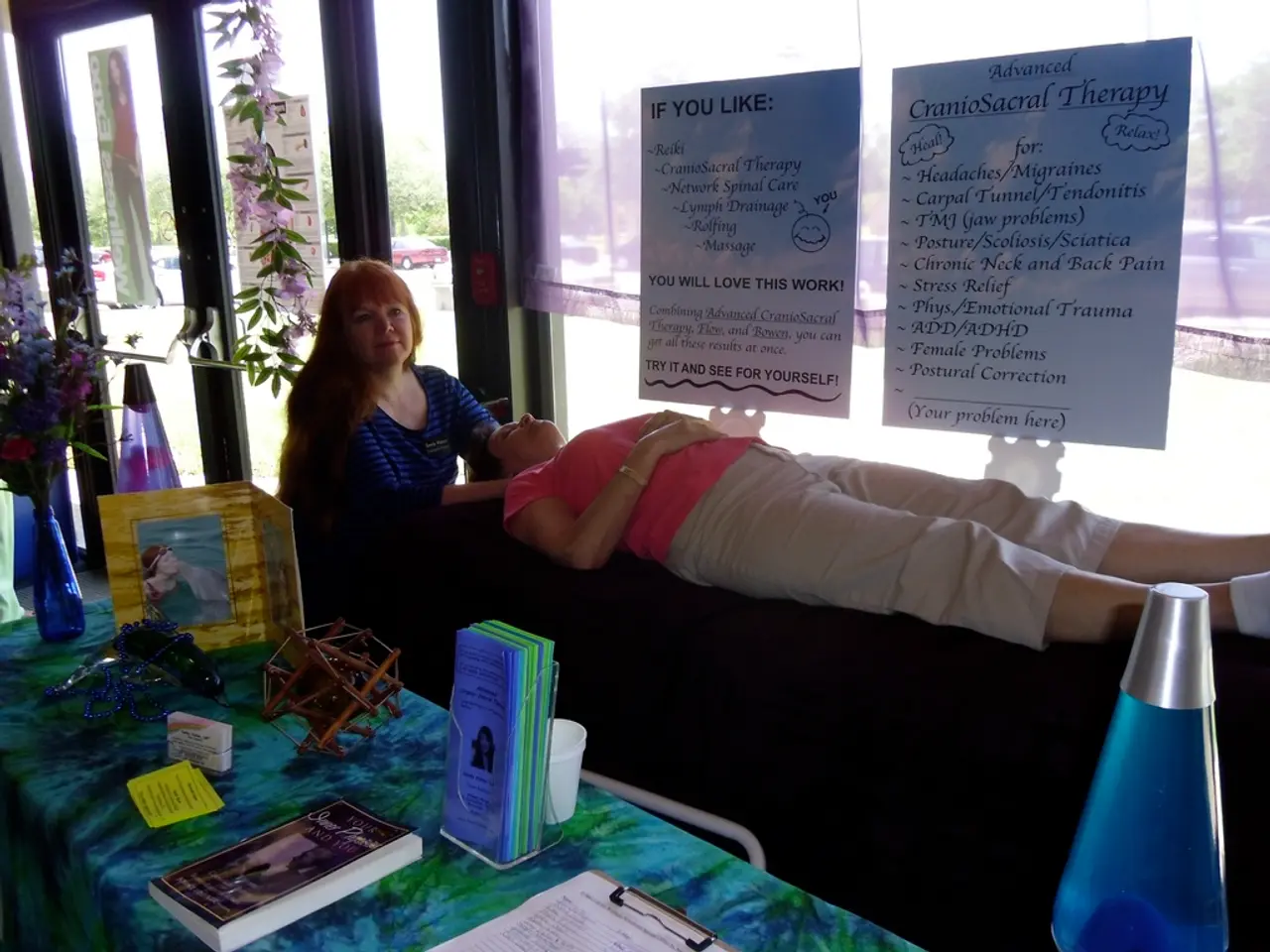Comprehensive Guide on Medications for Post-Traumatic Stress Disorder (PTSD)
In the treatment of Post-Traumatic Stress Disorder (PTSD), various medications are used to manage symptoms and provide relief. Here's a breakdown of some commonly used medications and their roles.
Selective Serotonin Reuptake Inhibitors (SSRIs) are a class of antidepressants that increase serotonin levels in the brain. They are often the first-line treatment for PTSD. Examples include sertraline (Zoloft), paroxetine (Paxil), fluoxetine (Prozac), and citalopram (Celexa). While SSRIs treat the core symptoms of PTSD and are usually well-tolerated, possible side effects include nausea, insomnia or drowsiness, sexual dysfunction, and weight changes. It may take up to 8 weeks for these medications to fully work.
Serotonin-Norepinephrine Reuptake Inhibitors (SNRIs) work by increasing both serotonin and norepinephrine, which help regulate stress and mood. They may help some PTSD symptoms such as anxiety and depression. Examples include venlafaxine (Effexor) and duloxetine (Cymbalta). Possible side effects include increased blood pressure, sweating, dizziness, sexual dysfunction, and withdrawal symptoms if missed. Doctors may prescribe SNRIs when SSRIs are not effective.
Atypical antipsychotics, originally developed for schizophrenia and bipolar disorder, can be used off-label to manage PTSD symptoms that are not responsive to SSRIs or SNRIs. Examples include quetiapine (Seroquel) and olanzapine (Zyprexa). Atypical antipsychotics are not first-line treatments for PTSD, and doctors consider them only when SSRIs or SNRIs have not worked, symptoms are severe, or there are co-occurring conditions like bipolar disorder, psychosis, or extreme anxiety.
Prazosin is a blood pressure medication that doctors may use off-label to treat PTSD-related nightmares and sleep disturbances. Prazosin works by blocking certain nerve signals, particularly the effects of norepinephrine (a stress hormone) in the brain, which can help reduce the frequency and intensity of nightmares in people with PTSD. Although prazosin may help PTSD nightmares and sleep, it does not help with all PTSD symptoms, and some people may need other medications alongside it.
Mood stabilizers, originally developed as anticonvulsants, can help regulate extreme shifts in mood and may help symptoms of PTSD, particularly irritability, aggression, impulsivity, and emotional instability. Examples include lamotrigine (Lamictal), divalproex sodium (Depakote), and topiramate (Topamax).
In Germany, medications frequently used off-label for PTSD-related sleep disturbances and nightmares include Mirtazapine, which may alleviate symptoms more effectively than SSRIs in severe cases. Other approaches include combination therapies like Brexpiprazol with Sertralin and MDMA-assisted therapy is emerging as promising, though not medications primarily for sleep.
Most people with PTSD may benefit most from a combination of medication and trauma-focused therapy. Therapies for PTSD, such as cognitive behavioral therapy (CBT), prolonged exposure therapy (PE), cognitive processing therapy (CPT), and eye movement desensitization and reprocessing (EMDR), can help a person process and heal from traumatic experiences.
Read also:
- visionary women of WearCheck spearheading technological advancements and catalyzing transformations
- Recognition of Exceptional Patient Care: Top Staff Honored by Medical Center Board
- A continuous command instructing an entity to halts all actions, repeated numerous times.
- Oxidative Stress in Sperm Abnormalities: Impact of Reactive Oxygen Species (ROS) on Sperm Harm








